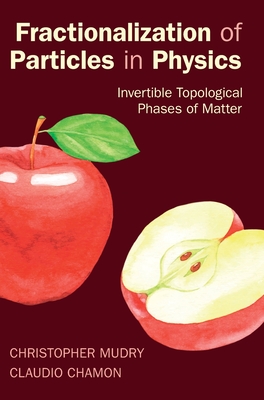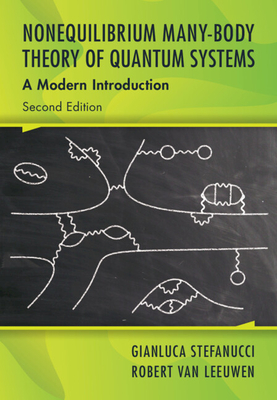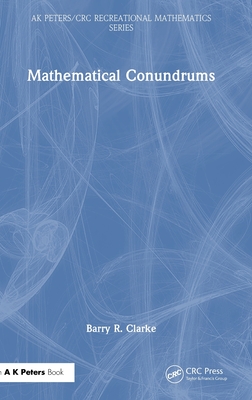图书简介
Authored by 40 authorities in genetics and dysmorphology, this streamlined new edition offers an authoritative and richly illustrated guide to clinical presentation, associated anomalies, treatment, and prognosis.
Introduction; Roger E. Stevenson and Judith G. Hall; Chapter 1 Limbs; Roger E. Stevenson; Introduction; 1.1 Limb Deficiency; 1.1a Absence of Limb; 1.1b Absent Radius; 1.1c Absent Ulna; 1.1d Absent Humerus; 1.1e Absence and Hypoplasia of the Tibia; 1.1f Absent Fibula; 1.1g Absence and Hypoplasia of the Femur; 1.1h Terminal Transverse Limb Deficiency; 1.2 Synostosis; 1.2a Carpal and Tarsal Coalition; 1.2b Metacarpophalangeal and Metatarsophalangeal Synostosis; 1.2c Proximal Symphalangism; 1.2d Distal Symphalangism; 1.2e Humeroradial Synostosis; 1.2f Radioulnar Synostosis; 1.2g Tibiofibular Synostosis; 1.2h Sirenomelia; 1.3 Constriction Rings; 1.4 Duplications, Excessive Partitions, and Accessory Bones; 1.5 Bowing of Long Bones; 1.6 Short Stature; 1.7 Tall Stature; 1.8 Limb Overgrowth; 1.9 Increased Bone Density; 1.10 Decreased Bone Density; 1.11 Osteolysis; 1.12 Anomalies of the Patella; 1.13 Arthrogryposis; 1.13a Amyoplasia; 1.13b Distal arthrogryposis; 1.13c Fetal akinesia phenotype; 1.13d Pterygium syndromes; Chapter 2 Hands/Feet; David B. Everman; Introduction; Polydactyly; 2.1a Preaxial Polydactyly; 2.1b Postaxial Polydactyly; 2.1c Mesoaxial Polydactyly; Syndactyly; 2.2a Syndactyly Type I; 2.2b Syndactyly Type II; 2.2c Syndactyly Type III; 2.2d Syndactyly Type IV; 2.2e Syndactyly Type V; 2.2f Cenani-Lenz Syndactyly; 2.2g Symbrachydactyly; Brachydactyly; 2.3a Brachydactyly Type A1; 2.3b Brachydactyly Type A2; 2.3c Brachydactyly Type A3; 2.3d Brachydactyly Type B; 2.3e Brachydactyly Type C; 2.3f Brachydactyly Type D; 2.3g Brachydactyly Type E; Deficiency; 2.4a Preaxial Deficiency; 2.4b Postaxial Deficiency; 2.5 Terminal Transverse Deficiency; 2.6 Split-Hand-Foot Malformation; 2.7 Macrodactyly; 2.8 Camptodactyly; 2.9 Clubfoot; Chapter 3 Pectoral and Pelvic Girdles; Louanne Hudgins and Neda Zadeh; Introduction; 3.1 Clavicular Hypoplasia/Aplasia; 3.2 Clavicular Pseudoarthrosis; 3.3 Altered Shape and Other Abnormalities of the Clavicle; 3.4 Sprengel Anomaly; 3.5 Glenoid Hypoplasia; 3.6 Anomalies of the Pelvic Bone; 3.7 Developmental Dysplasia of the Hip; 3.8 Coxa Vara; 3.8 Coxa Valga; Chapter 4 Spine and Ribs; Louanne Hudgins and Neda Zadeh; Introduction; 4.1 Occipitalization of the Atlas; 4.2 Aplasia/Hypoplasia of the Odontoid Process of the Axis; 4.3 Klippel-Feil Anomaly; 4.4 Segmentation Defects of the Vertebrae; 4.5 Altered Vertebral Body Contour; 4.6 Coronal Clefts of the Vertebrae; 4.7 Coronal Clefts of the Vertebrae; 4.8 Spondylolysis and Spondylolisthesis; 4.9 Sacral Agenesis; 4.10 Anomalies of the Ribs; 4.11 Cervical Rib; 4.12 Pectus Excavatum; 4.13 Pectus Carinatum; 4.14 Anomalies of the Sternum; Chapter 5 Skull; John M. Graham, Jr. and Pedro Sanchez-Lara; Introduction; 5.1 Craniosynostosis; 5.2 Kleeblattschadel; 5.3 Wide Cranial Sutures; 5.4 Anomalies of Fontanelles; 5.5 Parietal Foramina; 5.6 Wormian Bones; 5.7 Cranial Dermal Sinus; 5.8 Scalp Vertex Aplasia; 5.9 Thin Cranial Bones; 5.10 Undermineralization of the Skull; 5.11 Craniotabes; 5.12 Thick Cranial Bones; 5.13 Sclerosis and Hyperostosis of the Skull; 5.14 Vertex Birth Molding; 5.15 Breech Head and Bathrocephaly; 5.16 Other Cranial Deformations; 5.17 Anomalies of the Sella Turcica; 5.18 Anomalies of the Foramen Magnum; 5.19 Anomalies of Other Basal Foramina; 5.20 Basilar Impression; 5.21 Cephalohematoma; 5.22 Miscellaneous Anomalies of the Skull; Chapter 6 Facial Bones; Karen Gripp; Introduction; 6.1 Metopic Synostosis; 6.2 Orbital and Ocular Hypotelorism; 6.3 Orbital and Ocular Hypertelorism; 6.4 Zygomatic Hypoplasia; 6.5 Absent Manidble; 6.6 Congenital Asymmetry of Facial Skeleton; 6.7 Micrognathia; 6.8 Midface Retrusion and Hypoplasia; 6.9 Midline Facial Clefting; Chapter 7 Skin, Hair and Nails; Mary Beth Dinulos; Introduction; 7.1 Aplasia Cutis Congenita; 7.2 Ichthyosis; 7.3 Ectodermal Dysplasias; 7.4 Epidermolysis Bullosa; 7.5 Cutaneous Hamartomas; 7.6 Vascular Malformations; 7.7 Pigmentation Abnormalities; 7.8 Mosaicism; 7.9 Epidermal Appendage Abnormalities; 7.10 Disorders of Connective Tissue; Chapter 8 Muscle; Judith G. Hall; Introduction; 8.1a Hypertrophia Musculorum Vera; 8.1b Kocher-Debre Semaalagne; 8.1c Hyperekplexia; 8.2 Generalized Decrease in Muscle Mass; 8.3 Facial Muscle Deficiency; 8.3a Deficiency of Extraocular Eye Muscles; 8.3b Asymmetric Crying Face; 8.3c Mobius Syndrome; 8.3d Absence and Underdevelopment of the Tongue; 8.3e Macroglossia; 8.4 Diagraphagmatic Defect; 8.5 Achalasia; 8.6a Prune Belly Syndrome; 8.6b Other Abdominal Wall; 8.7a Poland Anomaly; 8.7b Lower Limb Poland Anomaly; 8.8 Other Muscle Hypoplasia; 8.9a Muscle Variants; 8.9b Muscle Variant Abnormalities Associated with Chromosomal Disorders; 8.9c Accessory Muscles; 8.9d Atavisms; Chapter 9 Brain; Alasdair G. W. Hunter; Introduction; 9.1 Microcephaly; 9.2 Megalencephaly; 9.3 Aprosencephaly-Atelencephaly; 9.4 Holoprosencephaly; 9.5 Malformations of Cortical Development; 9.5a Lissencephaly; 9.5b Pachygyria; 9.5c polymicrogyria; 9.5d Heterotopia; 9.5e Focal Cortical Dysplasia; 9.6 Agenesis of the Corpus Callosum; 9.7 Cavum; 9.8 Hydrocephalus; 9.9 Colpocephaly; 9.10 Hydranencephaly; 9.11 Porencephaly; 9.12 Cerebellar Abnormalities; 9.13 Cystic Malformations; 9.14 Chiari Malformations; Chapter 10 Spinal Cord; David Dyment; Introduction; 10.1 Primary Tethered Cord; 10.2 Split Cord; 10.3 Tailgut Cyst; 10.4 Syringomelia; 10.5 Myelocystocele; 10.6 Meningocele; 10.7 Neurenteric Malformation; 10.8 Intraspinal Cysts; Chapter 11 Brain and Spinal Cord; Roger E. Stevenson; Introduction; 11.1 Anencephaly; 11.2 Iniencephaly; 11.3 Encephalocele; 11.4 Spina Bifida; Chapter 12 The Eye; Elias I. Traboulsi, Shomoukh AlShamekh and Natario L. Couser; Introduction; 12.1 Anophthalmia; 12.2 Microphthalmia and Typical Uveal Coloboma; 12.3 Cyclopia and Synophthalmia; 12.4 Cryptophthalmos; 12.5 Blepharophimosis; 12.6 Other Anomalies of the Eyelids; 12.7 Corneal Malformations; 12.8 Aniridia; 12.9 Anterior Segment Dysgenesis; 12.10 Peters Anomaly; 12.11 Cataracts; 12.12 persistent Hyperplastic Primary Vitreous; 12.13 Optic Nerve Hypoplasia; 12.14 Optic Pit; 12.15 Morning Glory Disc Anomaly; Chapter 13 External Ear; Dorothy Katherine Grange; Introduction; 13.1 Absence of the External Ear; 13.2 Small Ear; 13.3 Large Ear; 13.4 Cryptotia; 13.5 Synotia and Otocephaly; 13.6 Polyotia; 13.7 Anomalies of the External Auditory Canal; 13.8 Abnormal Ear Position; 13.9 Lop-Cup Ear Anomaly; 13.10 Protruding Ear; 13.11 Variants of the Helix and Anthelix; 13.12 Variants of the Ear Lobe; 13.13 Auricular Tags; 13.14 Auricular Pits; 13.15 Ear Lobe Creases and Pits; 13.16 Deformation of the Auricle; Chapter 14 Middle Ear; John D. Carey and Albert H. Park; Introduction; 14.1 Absence, Hypoplasia, and Malformations of the Malleus; 14.2 Fusion Defects of the Malleus; 14.3 Absence, Hypoplasia and Malformation of the Incus; 14.4 Fusion Defects of the Incus; 14.5 Absence, Hypoplasia and Malformation of the Stapes; 14.6 Congenital Fixation of the Stapes; 14.7 Absence of the Oval Window; 14.8 Congenital Cholesteatoma; 14.9 Persistence of the Stapedial Artery; 14.10 Highly Placed Jugular Bulb; Chapter 15 Inner Ear; Eloise J. Prijoles; Introduction; 15.1 Inner Ear; 15.2 Prelingual Hearing Loss; Chapter 16 Nose; Margaret P. Adam; Introduction; 16.1 Absent Nose; 16.2 unilateral Arhinia; 16.3 Small Nose; 16.4 Cleft Ala Nasi; 16.5 Bifid Nose; 16.6 Choanal Atresia; 16.7 Supernumerary Nares; 16.8 Proboscis; 16.9 Minor Anomalies of the Nose; 16.10 Nasal Tooth; 16.11 Deviation of the Nasal Septum; 16.12 Turbinate Deformity; 16.13 Arhinencephaly; 16.14 Encephalocele Involving the Nose; Chapter 17 Lips; Marilyn Jones; Introduction; 17.1 Median Cleft Lip; 17.2 Cleft Lip with or without Cleft Palate; 17.3 Cleft Palate; Chapter 18 Tongue; Michael I. Cunningham; Introduction; 18.1 Absence and Underdevelopment of the Tongue; 18.2 Macroglossia; 18.3 Absence of Lingual Frenulum; 18.4 Ankyloglossia; 18.5 Glossopalatine Ankylosis; 18.6 Supernumerary Tongue; 18.7 Bifid Tongue; 18.8 Fissured Tongue, Scrotal Tongue, Lingua Plicata; 18.9 Median Rhomboid Glossitis; 18.10 Pigmented Fungiform Papillae of the Tongue; 18.11 Choristoma of the Tongue; 18.12 Lymphangioma of the Tongue; 18.13 Hemangioma of the Tongue; 18.14 Mixed Hamartoma of the Tongue; 18.15 Teratoma of the Tongue; 18.16 Lingual Thyroid; Chapter 19 Teeth; Hitesh Kapadia; Introduction; 19.1 Absence of One or More Teeth; 19.2 Macrodontia; 19.3 Microdontia; 19.4 Supernumerary Teeth; 19.5 Abnormalities of Tooth Shape; 19.6 Enamel Dysplasia; 19.7 Dentin Dysplasia; 19.8 Abnormalities of Tooth Eruption; 19.9 Dental Malocclusion; Chapter 20 Heart; Paul Stephen Kruszka and Laura Olivieri; Introduction; 20.1 Atrial Septal Defect; 20.2 Atrioventricular Septal Defect; 20.3 Ventricular Septal Defect; 20.4 Left Ventricular Outflow Obstruction; 20.5 Right Outflow Tract Obstruction; 20.6 Conotruncal Defects; 20.7 Double Outlet Right Ventricle; 20.8 Single Ventricle; 20.9 Ebstein; 20.10 Tricuspid Atresia; 20.11 Pulmonary Venous Anomalies; 20.12 Coronary Anomalies; 20.13 Heterotaxy; Chapter 21 Systemic Vasculature; Lynne M. Bird; Introduction; 21.1 Interrupted Aortic Arch; 21.2 Right Aortic Arch; 21.3 Cervical Aortic Arch; 21.4 Double Aortic Arch; 21.5 Double Lumen Aortic Arch; 21.6 Innominate Artery Variants; 21.7 Subclavian Artery Variants; 21.8 Patent Ductus Arteriosus; 21.9 Coarctation of the Aorta; 21.10 Peripheral Pulmonic Stenosis; 21.11 Persistent Left Superior Vena Cava; 21.12 Inferior Vena Cava Variants; 21.13 Congenital Absence of Portal Vein; 21.14 Congenital left Renal Vein Anomalies; 21.15 patent Ductus Venosus; 21.16 Scimitar Syndrome; 21.17 Deep Vein Abnormalities; Chapter 22 Lymphatic System; Stavit Allon Shalev; Introduction; 22.1 Lymphedema; 22.2 Intestinal Lymphangiectasia; 22.3 Cystic Renal Lymphangiectasia; 22.4 Generalized Lymphatic Dysplasia; 22.5 Pulmonary Lymphangiectasia; 22.6 Fetal Cystic Hygroma; 22.7 Lymphangioma; 22.8 Lymphangioleiomyomatosis; Chapter 23 Spleen; Arthur S. Aylsworth; Introduction; 23.1 Asplenia,Congenital,Nonsyndromal; 23.2 Asplenia, Congenital, Syndromal; 23.3 Polysplenia; 23.4 Positional Alterations of the Spleen; 23.5 Splenic Fusion; 23.6 Accessory Spleen; 23.7 Splenic Structural Variation; 23.8 laterality: Situs Inversus; 23.9 Laterality: Situs Ambiguus; Chapter 24 Lower Respiratory Organs; Caleb P. Bupp and Roger E. Stevenson; Introduction; 24.1 Bifid Epiglottis; 24.2 Laryngeal Atresia, Webs, and Stenosis; 24.3 Laryngeal Cleft; 24.4 Absent Trachea; 24.5 Tracheal Stenosis; 24.6 Congenital Tracheal Cartilaginous Sleeve; 24.7 Tracheoesophageal Fistula; 24.8 Pulmonary Agenesis; 24.9 Primary Pulmonary Hypoplasia; 24.10 Congenital Cystic Adematoid Malformation; 24.11 Congenital Lobar Emphysema; 24.12 Diaphragmatic Hernia; Chapter 25 Ventral Wall of the Trunk; Cynthia J. Curry and Jacob Hogue; Introduction; 25.1 Sternal Defects; 25.2 Ectopia Cordis; 25.3 Gastroschisis; 25.4 Umbilical Hernia; 25.5 Omphalocele; 25.6 Limb-Body Wall Defect; 25.7 Exstrophy of the Bladder; 25.8 Exstrophy of the Cloaca; Chapter 26 Upper Gastrointestinal System; H. Eugene Hoyme and Roger E. Stevenson; Introduction; 26.1 Pharyngeal Fistula; 26.2 Congenital Pharangeal Diverticula; 26.3 Esophageal Atresia and Tracheoesophageal Fistula; 26.4 Esophageal Webs and Rings; 26.5 Tubular Esophageal Duplications; 26.6 Enterogenous Cysts; 26.7 Esophageal Diverticula; 26.8 Heterotopic Gastric Mucosa; 26.9 Congenital Short Esophagus; 26.10 Achalasia; 26.11 Chalasia; 26.12 Atresia and Stenosis of the Stomach; 26.13 Microgastria; 26.14 Diverticula of the Stomach; 26.15 Duplication of the Stomach; 26.16 Defects of Gastric Musculature; 26.17 Malposition of the Stomach; 26.18 Mucosal Heterotopia; 26.19a Pyloric Atresia; 25.19b Infantile Hypertrophic Pyloric Stenosis; 26.20 Duodenal Atresia and Stenosis; 26.21 Duodenal Duplications; 26.22 Duodenal Diverticula; 26.23 Malrotation of the Duodenum; 26.24 Congenital Aganglionic Duodenum; 26.25 Extrinsic Vascular Obstruction of the Duodenum; 26.26 Congenital Paraduodenal Hernia; Chapter 27 Small and Large Intestines; Roger E. Stevenson; Introduction; 27.1 Jejunal Atresia and Stenosis; 27.2 Ilial Atresia andr Stenosis; 27.3 Colon Atresia andr Stenosis; 27.4 Multiple Intestinal Atresias; 27.5 Megacolon; 27.6 Malrotation of Intestines; 27.7 Duplications and Cysts of Intestine; 27.8 Meckel Diverticulum; Chapter 28 Rectum/Anus; Cathy A. Stevens; Introduction; 28.1 Atresia of the Rectum and Anus; 29.2 Rectal Duplication; Chapter 29 Liver, Gall Bladder, and Pancreas; Ian D. Krantz and Kosuke Izumi; Introduction; 29.1 Anomalies of Liver Shape and Lobation; 29.2 Liver Dysplasia; 29.3 Intrahepatic Biliary Duct Atresia; 29.4 Agenesis of the Gallbladder; 29.5 Extrahepatic Biliary Atresia; 29.6 Cysts of Biliary Systems; 29.7 Structural Variation of the Gallbladder; 29.8 Absence of the Pancreas; 29.9 Structural Variation of the Pancreas; 29.10 Pancreas Cysts and Dysplasias; 29.11 Pancreas Ectopia and Heterotopia; Chapter 30 The Urinary Tract; Jane Alison Evans; Introduction; 30.1 Renal Agenesis; 30.2 Renal Hypoplasia; 30.3 Autosomal Recessive Polycystic Kidney Disease; 30.4 Autosomal Dominant Polycystic Kidney Disease; 30.5 Renal Dysplasia; 30.6 Familial Nephronophthisis/Medullary Cystic Disease; 30.7 Medullary Sponge Kidney; 30.8 Obstructive Renal Cystic Disease; 30.9 Supernumerary Kidney; 30.10 Horseshoe Kidneys; 30.11 Renal Ectopia; 30.12 Duplication of the Ureter; 30.13 Absent Urinary Bladder; 30.14 Congenital Megacystis; 30.15 Bladder Diverticulum; 30.16 Urachal Anomalies; 30.17 Urethral Agenesis/Atresia; 30.18 Posterior Urethral Valves and Urethral Stenosis; 30.19 Urethral Duplication; Chapter 31 Male Genital System; Roger E. Stevenson; Introduction; 31.1 Absent Penis; 31.2 Micropenis; 31.3 Hypospadias; 31.4 Epispadias; 31.5 Hidden or Concealed Penis; 31.6 Megalourethra; 31.7 Diphallia; 31.8 penoscrotal Transposition; 31.9 Ectopia-Accessory Scrotum; 31.10 Cryptorchidism; 31.11 Absent or Small Testis; 31.12 Polyorchidism; 31.13 Ectopic Testis; 31.14 Undermasculinization; 31.15 Wolffian Duct Malformation; 31.16 Persistent Mullerian Ducts; 31.17 Splenogonadal Fusion; 31.18 Inguinal hernia; 31.19 Hydroceles; Chapter 32 Female Genital System; Leah W. Burke; Introduction; 32.1 Ovarian Dysgenesis; 32.2 Mixed Gonadal Dysgenesis; 32.3 Ovotesticular Disorder of Sexual Development; 32.4 Ambiguous Genitalia; 32.5 Mullerian Aplasia; 32.6 Absence of Fallopian Tubes; 32.7 Incomplete Mullerian Fusion; 32.8 Cervical Aplasia; 32.9 Vaginal Aplasia; 32.10 Transverse Vaginal Septum; 32.11 Longitudinal Vaginal Septum; Chapter 33 Breasts; Roger E. Stevenson; Introduction; 33.1 Amastia-Hypomastia; 33.2 Enlarged Breasts; 33.3 Supernumerary Nipples; 33.4 Widely Spaced Nipples; 33.5 Gynecomastia; Chapter 34 Asymmetric Growth and Generalized Overgrowth; Jennifer M. Kalish; Introduction; 34.1 Hemihypoplasia; 34.2 Hemihyperplasia/Hemihypertrophy; 34.3 Generalized Overgrowth; Chapter 35 Twins; Judith G. Hall; Introduction; 35.1 Dizygotic Twinning; 35.2 Vanishing Twin; 35.3 Fetus Papyraceus; 35.4 Monozygotic Twins; 35.5 Mirror Image Twins; 35.6 Twin to Twin Transfusion; 35.7 Acardia; 35.8 Conjoined Twins; 35.9 Parasitic Twins; 35.10 Sacral Teratoma; Chapter 36 Umbilical Cord and Placenta; Isabel Filges; Introduction; 36.1 Molar Transformation of the Placenta; 36.2 Placental Mesenchymal Dysplasia; 36.3 Chorangioma; 36.4 Placentation in Twinning; 36.5 Umbilical Cord Loops; 36.6 Umbilical Cord Knots; 36.7 Umbilical Cord length; 36.8 Umbilical Cord Insertion; 36.9 Vascular Anomalies of the Umbilical Cord; 36.10 Umbilical Cord Cyst; 36.11 Umbilical Cord Hernia; 36.12 Umbilical Cord Torsion; 36.13 Umbilical Cord helical Ulceration; 36.14 Anomalies of Umbilical Cord Separation; 36.15 Umbilical Cord Diameter; 36.16 Umbilical Cord Disruption; Appendix; Subject Index
Trade Policy 买家须知
- 关于产品:
- ● 正版保障:本网站隶属于中国国际图书贸易集团公司,确保所有图书都是100%正版。
- ● 环保纸张:进口图书大多使用的都是环保轻型张,颜色偏黄,重量比较轻。
- ● 毛边版:即书翻页的地方,故意做成了参差不齐的样子,一般为精装版,更具收藏价值。
关于退换货:- 由于预订产品的特殊性,采购订单正式发订后,买方不得无故取消全部或部分产品的订购。
- 由于进口图书的特殊性,发生以下情况的,请直接拒收货物,由快递返回:
- ● 外包装破损/发错货/少发货/图书外观破损/图书配件不全(例如:光盘等)
并请在工作日通过电话400-008-1110联系我们。
- 签收后,如发生以下情况,请在签收后的5个工作日内联系客服办理退换货:
- ● 缺页/错页/错印/脱线
关于发货时间:- 一般情况下:
- ●【现货】 下单后48小时内由北京(库房)发出快递。
- ●【预订】【预售】下单后国外发货,到货时间预计5-8周左右,店铺默认中通快递,如需顺丰快递邮费到付。
- ● 需要开具发票的客户,发货时间可能在上述基础上再延后1-2个工作日(紧急发票需求,请联系010-68433105/3213);
- ● 如遇其他特殊原因,对发货时间有影响的,我们会第一时间在网站公告,敬请留意。
关于到货时间:- 由于进口图书入境入库后,都是委托第三方快递发货,所以我们只能保证在规定时间内发出,但无法为您保证确切的到货时间。
- ● 主要城市一般2-4天
- ● 偏远地区一般4-7天
关于接听咨询电话的时间:- 010-68433105/3213正常接听咨询电话的时间为:周一至周五上午8:30~下午5:00,周六、日及法定节假日休息,将无法接听来电,敬请谅解。
- 其它时间您也可以通过邮件联系我们:customer@readgo.cn,工作日会优先处理。
关于快递:- ● 已付款订单:主要由中通、宅急送负责派送,订单进度查询请拨打010-68433105/3213。
本书暂无推荐
本书暂无推荐
















